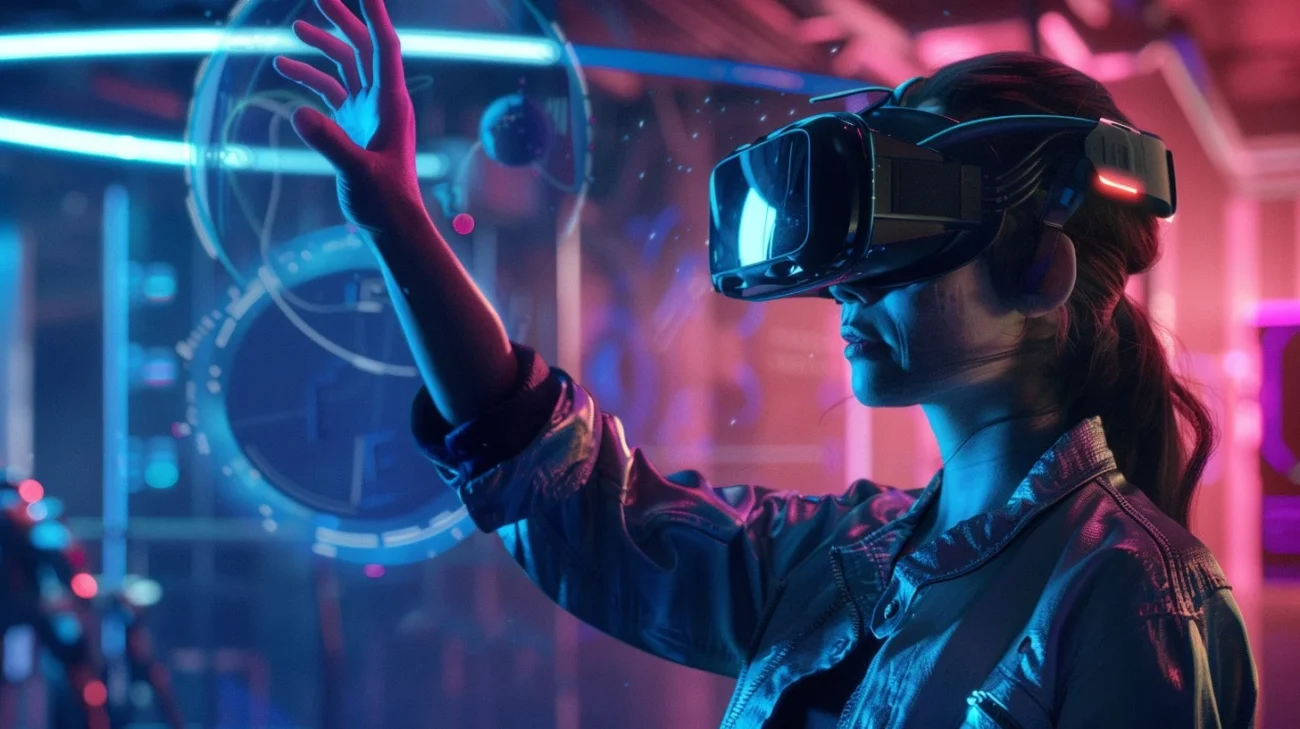Virtual Reality (VR) has undergone a remarkable transformation with the advent of Virtual Reality 2.0—ushering in a new era of immersive, intuitive, and impactful experiences. Far beyond the bulky headsets and limited interactivity of the past, VR 2.0 uses cutting-edge technology to redefine how we play games, heal through therapy, and learn new skills in training environments. This revolution enhances realism, accessibility, and personalization, opening up vast possibilities across industries.
What is Virtual Reality 2.0?
Virtual Reality 2.0 represents the next wave of VR innovation, distinguished by improvements in hardware, software, and artificial intelligence (AI). Unlike early VR that concentrated mostly on visual immersion, VR 2.0 integrates ultra-realistic graphics powered by real-time ray tracing, haptic feedback devices that simulate touch, and intelligent AI-driven virtual environments that adapt to user behavior. Advanced features like eye-tracking and facial recognition allow intuitive interactions, while lightweight, wireless headsets make experiences comfortable and untethered.
This evolution is less about incremental upgrades and more about creating a seamlessly immersive world where virtual encounters feel natural and compelling. High-speed 5G connections and cloud computing further enable real-time responsiveness, reducing latency and expanding VR’s reach through more accessible devices.
Breakthroughs in VR Gaming
Gaming remains one of the most visible frontiers for VR 2.0, but the experience has matured dramatically.
- Highly Immersive Worlds: Titles like Beat Saber and Half-Life: Alyx demonstrate how VR gaming now surrounds players with 3D environments that feel “inside the game” rather than just looking at a screen. This sensory immersion is made possible by high-resolution displays and accurate motion tracking that capture every player movement.
- Intuitive Controls: VR 2.0 introduces motion controllers, inside-out tracking, and haptic feedback gloves that let players interact naturally with objects and characters. Eye-tracking allows aiming or selection just by where the player looks, making gameplay more fluid.
- AI-Driven NPCs: Non-playable characters powered by AI respond dynamically to player actions, creating more engaging, unpredictable gameplay that adapts to each user’s style.
- Wireless Freedom: Cutting the cords with lightweight, ergonomic headsets means players can move freely without worrying about getting tangled, greatly enhancing comfort and safety.
These advancements transform gaming into fully embodied experiences, blending physical activity with digital challenge and storytelling to captivate players like never before.
VR Therapy Breakthroughs
Therapeutic applications of VR 2.0 are pioneering new frontiers in mental health and rehabilitation.
- Exposure Therapy: Immersive VR environments allow therapists to safely expose patients to phobias, anxiety triggers, or PTSD scenarios under controlled conditions. This virtual exposure helps patients face fears with gradual support and significantly reduces symptoms.
- Pain Management: VR distracts the brain by drawing focus to vivid, engaging virtual environments, reducing the perception of chronic pain. Studies show VR therapy eases pain conditions such as fibromyalgia and supports relaxation techniques.
- Psychosis and Social Skills: Patients experiencing psychosis, including schizophrenia, can benefit from VR-based interventions. Simulated social environments with avatars enable training in social skills and management strategies for hallucinations or delusions, improving functional outcomes.
- Customization and Accessibility: Advanced VR 2.0 setups with AI-driven avatars tailor therapeutic content to individual patient needs, making therapy more effective and engaging. Portable systems and companion mobile apps extend access outside clinical settings.
These breakthroughs mark a shift from purely pharmacological and traditional talk therapies to interactive, tech-enhanced treatment modalities that empower patients to actively engage in their recovery journey.
Advances in VR Training and Skill Development
Training is another critical domain where VR 2.0 is making a profound impact by offering realistic, repeatable practice without real-world risks.
- Generative AI Integration: AI tools rapidly create customizable training environments and virtual characters, slashing development time and cost. This efficiency lets organizations scale VR training for diverse roles and industries.
- Personalized Learning: AI tracks a user’s performance in real time and adapts scenarios to match skill levels, ensuring optimal challenge and engagement. For example, sales training VR can modulate customer difficulty, or medical VR can simulate varied patient cases.
- Soft Skills and Complex Tasks: VR enables safe practice of communication, leadership, emergency response, and surgical procedures. Learners benefit from hands-on experience that builds confidence and retention far better than conventional instruction.
- Increased Accessibility and Cost Effectiveness: Lightweight, standalone devices combined with cloud-based rendering reduce hardware costs while maintaining immersion quality. This democratizes VR training, benefiting both large enterprises and smaller organizations.
Studies show VR training can improve retention and job readiness by up to 76%, highlighting its efficiency and growing relevance in workforce development.
Looking Ahead: What VR 2.0 Means for the Future
Virtual Reality 2.0 is only beginning to reshape how we interact with digital worlds. As hardware becomes lighter and more comfortable, AI smarter, and connectivity faster, the boundaries between real and virtual will continue to blur.
For gamers, this means more immersive, socially connected, and personalized gaming universes. For patients, VR 2.0 signals more accessible and effective therapy options with fewer side effects. For professionals and learners, it promises safer, more engaging, and adaptive training solutions.
The integration of AI, 5G, cloud computing, and wearable tech will enable increasingly intelligent, responsive, and realistic virtual environments. These advances position VR as a foundational technology for entertainment, healthcare, and education in the coming decades.
Conclusion
Virtual Reality 2.0 is revolutionizing the ways we play, heal, and learn by offering immersive experiences that are intuitive, personalized, and impactful. From lifelike gaming realms and groundbreaking VR therapy to AI-powered, adaptive training simulations, VR 2.0 unlocks possibilities that were once purely science fiction.
As this technology matures and becomes more accessible, it offers exciting opportunities for innovators, professionals, and everyday users worldwide. Whether you’re a gamer, a therapist, a corporate trainer, or an enthusiast, embracing VR 2.0 means stepping into a new dimension of experience — one that will change how we interact with the digital and real worlds forever.
Ready to experience the future? Dive into Virtual Reality 2.0 today and transform your gaming, therapy, or training with immersive innovation!

